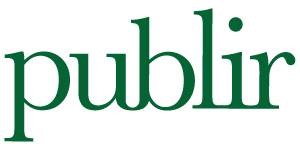
Market research feels technical and complicated for many brands and agencies. Thankfully new technology and tools have helped to simplify it for all, no matter your business size. You need to know what your customers want from you and what they think about your products, services, and content. Market research offers insights to set your objectives to match your target group’s wavelength.
What is Market Research All About?

Market research is a process that lets businesses know more about the end-user of the products and services it offers. It allows a brand to create the profile or persona of its user using tools to collect useful customer information.
Why do you need market research at all?
- The market is a dynamic entity that changes constantly and evolves every day.
- Socioeconomic, political, and cultural factors influence markets and consumers, who make buying decisions.
- You need to know where your product or service stands in the market, where hundreds of others are competing to reach your potential customers.
- It provides insights on the unique needs of your audience so you can make decisions related to your product, including price, promotion, and the place, from where your customers can get it (3Ps).
- It provides a roadmap to help you reach your customers effectively by mitigating the challenges in your way.
- Provides insights on factors that influence customers, leading to conversion.
Types of Market research

There are two types of market research; primary and secondary research. Both serve a purpose depending on the overall goals of your research.
Primary Research
Primary research helps you to get to know more about how your product performs in the market, who your target audience is, and the geographical region in which you sell your products and services.
You can conduct phone or email surveys, conduct polls on your social media platforms, or engage a professional agency to prepare questionnaires to collect information, based on the size of your audience and the type of information you need.
Doing the back-end legwork allows you to approach the research with a specific set of questions to explore measurable consumer behavior and to identify potential challenges to reach them and will try to overcome those challenges.
What types of primary research should you use?
- Close-ended, quick surveys
- Multivariate, exploratory surveys
- In-depth studies
- Observatory studies
Close-ended multiple-choice surveys are generally used to elicit the basic demographic information of your target groups, such as age, gender, income, education, and professional background.
Multivariate, exploratory surveys use exploratory questions to dig into details beyond basic information, including customers’ opinions on your product, likes and dislikes in varying degrees and scales from 1-10, and trace customer expectations along with suggestions to improve it further. YouTube, for example, asks its viewers constantly what they would like to watch on the channel using an exploratory survey. The findings will be helpful to enhance the user experience.
In-depth studies are conducted over an extended period, covering huge sample data for a detailed orientation. It collects qualitative information from users. For example, Mozilla did an in-depth study spanning 10 months, speaking to millions of YouTube users. It revealed detailed information on how the channel violates its algorithm.
Observatory studies
Observatory studies are participatory research where the researcher participates in the buying and consumption process and remains as a neutral, participant-observer to collect unbiased, first-hand knowledge on your customer. If Netflix wants to measure the consumption pattern of its existing customer, the researcher should participate in person with families to try to understand how they watch. Is it collective or individual viewing? Who controls the TV remote? Do children influence parents in picking the movies/programs? Does the viewer allow ads to run or bypass them? Participatory observation studies provide rich qualitative information on the user.
Secondary Research
While you commission primary research to map the performance of your product, secondary research is information available for you in the public domain as open-source or beyond the paywalls. You can bank on secondary research for information on your industry, including your competitors, public policies, and the latest trends emerging in your specific market. Major organizations and government bodies regularly conduct research at a massive scale and publish it for citizens on budget allocations, changes in the labor market, and the changing demographic composition within different provinces, states, and countries. This information can help support project funding requests.
Sources of Research Information
Public Sources
The U.S. Census Bureau and the Bureau of Labor & Statistics, both offer nationwide statistics and analysis on the industries and job market and most of these sources do not charge you to access information.
Private Resources
Private sector entities, including major business houses and research organizations that take up sponsored research projects, publish vital business trends for free as well as for a subscription. Research agencies like Pew, Gartner, or Forrester provide authentic research information.
The Internet
The internet offers several avenues for researchers and businesses alike. While open-access sites provide free information for all, paid sources offer restricted additional information that you’re unlikely to find for free.
Internal sources
The data-driven modern-day business collects metrics on customer behavior using integrated automated tools like CRMs that pump in ample insights on your existing customers, such as their purchasing patterns, spending power, customer expectations, average revenue per sale, and customer retention rates, among other things.
Important Research Tools and Techniques to Conduct Market Research
Interviews, focus-group discussions, and observation are the major research tools used to collect customer information.
Interviews
Interviews conducted in person or through virtual mode enable face-to-face interaction with the end-user. A well-structured, open-ended questionnaire helps the researcher to collect detailed customer information. You can use interviews to collect exclusive, individual opinions on your products or services that you do not want to share in public, yet use it to improve your product quality or customer experience.
Focus Groups
If you are keen on introducing a new product or service to a new audience, you need to get multiple perspectives from the group. You should identify your prospective customer by taking their age, gender, linguistic and cultural traits into account, and then invite a diverse mix of the group for a brainstorming session or discussion, using a structured, open-ended questionnaire in hand. Record the entire session and sum up to draw insights from the discussion.
Participatory Observation
Participatory observation involves fieldwork, interviews, observation, and interaction with customers in the environment where they consume your product. It traces elements like the socioeconomic and cultural background of the customer to understand their media consumption behavior, purchasing habits, and usage.
Get Into Action
Having understood the basic research methods and techniques, you can now jump into action and conduct market research. But how do you go about it?
Set your Research Objectives
What do you want to explore out of this research? This is your research objective. You may want to know the music preferences of Hispanic youth, aged 18-24. You should frame your objective as “Music Preferences of Hispanic Youth Aged 18-24 in said state or province.” You may need to narrow down your study to a specific geographical area by identifying the region that is predominantly Spanish. You can apply the findings to the larger population, as research studies are time-bound and focus on representative samples.
Build your target group’s business persona
It’s important to answer a few questions before you begin creating marketing materials for a specific project. Answer these basic questions before you begin, as they relate to your business. Not every piece of demographic information may be important for your purposes.
What do you know about your target group?
- Age
- Gender
- Schooling/educational level
- Employment status
- Family background
- Music preferences
- Ideological & religious beliefs
- Sexual orientation
You need to know your audience’s persona and behaviors before you get into action.
Identify your key informants
Amazon is aiming at expanding into health care technologies. It has FCC permission to test a device that monitors the sleeping habits of people using radars, as the intention is to develop a contactless sleep tracking device.
How does Amazon get into action to pilot test its utilities, once the device is ready? It may choose to study the working population that operates in night shifts and their sleeping patterns in New York City’s Manhattan area. American Community Survey estimates from the U.S. Census Bureau revealed that in 2005-2009, 1.1% of Manhattan workers arrived at work between 12:00 a.m. and 5:00 a.m. These were “night-shift” workers.
By handpicking a few companies with night shifts, the researcher can draw a sample of 10 each from 10 such companies to collect data on how the new device acts and tracks sleeping patterns, by linking these sensor-based devices to a monitor.
Ways to Identify Key Informers
- If you are an educational technology device marketer you can recruit students, teachers, parents, and institutions for your study.
- Pick from your customer base, who are already using your product, including those who made a recent purchase.
- Select informants using your competitor’s product.
- Prospective customers that are observing your product and yet to make a purchasing decision can also be part of your study.
- Call for research participants in your social media account.
- Engage a contest, online quiz, or an event, inviting a set audience to participate.
- Announce coupons, incentives and recruit informants.
Depending on your research objectives, you can decide whether you need qualitative data or quantitative information. Observatory studies, group discussions, and interviews are qualitative research methods. Surveys gather quantitative data. Your research needs such as pre-testing a product before launching it are different from studying its impact once it is released in the market. This would equally determine the type of data you are supposed to collect from your informants.
Preparing Research Questions
Be it a phone interview or an online survey, you should approach your informants with a predetermined questionnaire, which may be close-ended with limited options to pick from answers or open-ended questions, that let the informant provide their own narrative response, which may be purely personal and may vary, based on the diversity of the representatives included in the study. Close-ended questions are suitable for surveys and exit polls. In-depth studies use multiple options from 1-5 to pick. All qualitative studies employ open-ended questionnaires for data collection
How to get maximum results from your respondents

- The question should only probe a topic for conversation
- It should allow the participant to reveal his/her opinion
- Each question should be non-judgmental and not include bias from the researcher
- Questions should be unambiguous and self-explanatory
- The survey itself should not be too lengthy for the informant to digest it
A Template to Conduct a 30 Minute, Interview-based Market Research on Electric Car
- It should include: Questions on the information such as age, gender, location, etc., must not take more than 5 minutes.
- Questions related to car design, interiors, space, and other utilities.
- Your product-related questions, such as how efficient it is .in reaching destination within the stipulated time
- What is the electricity consumption?
- Are there challenges in re-charging the battery?
- What kind of extension agent support did he get on product awareness?
- After sales-Service in installing it
- How does the customer service respond when the user is stuck with breakdowns and repairs?
- Loan facilities and recovery
- Maintenance, warranty, and product insurance, etc.
- These questions must be able to elicit responses within the next 15 minutes.
Finally, include questions that do not consume more than 10 minutes, leading to purchasing decisions such as;
- Where the customer did acquired information on the product?
- About competitor’s product usage in surroundings
- Is the vendor’s website provided useful product information?
- What keywords did he use to search the internet, if he browsed the web?
- Are there social media forums that helped him to get information?
- Which medium of communication is highly effective in giving product features, price, utilities, and other information?
- What features of the product attracted him? How did this product provide solutions to his immediate needs?
- What are the future expectations?
- Are there any suggestions to improvise the product to suit seasonal and geographical variations?
The size of the survey or questionnaire should not be too lengthy for an interview, focus group discussion, and observation-oriented studies. You can conduct an exploratory survey with a well-structured questionnaire to collect data from 2000 customers.
For exploratory studies, you must use multi-variant answers to your questions.
For example, you are studying a viewer’s opinions on an ad campaign that promotes ‘Microsoft Edge Kids Mode’ as a safer place for children to explore the web
You can arrange questions eliciting parents’ opinions such as;
Web browsing for children is safe with regulatory measures of law-making bodies
- Strongly agree
- Somewhat agree
- Do not agree
- Strongly disagree
Parents can allow children aged 8-11 to view YouTube videos
- Strongly agree
- Somewhat agree
- Do not agree
- Strongly disagree
A researcher can seek answers to a set of general questions before getting deeper into the product-oriented questions like product quality, user experience, and how quickly it loads.
Topics like online gaming and children’s behavior can be explored posing questions for a small group of parents for a focus group discussion. The researcher can explore aspects like: Whether online gaming leads to;
- Depression
- Child’s isolated behavior
- Changes in lifestyles
- Socialization skills
- Child’s performance in studies before and after gaming behavior
The researcher can take professional help in preparing a questionnaire or search the internet for more information.
Wrapping-up
Surveying in a friendly environment yields you the best research outcome, So, it’s important to watch the body language and responses of your interview subject. Allow some concluding remarks to end your interaction with a happy note and acknowledge the time and effort of the informant with a thank you email or mention them as sources in your research repoHow and Where Do You Apply Primary Market Research Findings?
- To build the persona of your target group including their decision-making behavior.
- It provides new business leads and clues on your customer’s expectations.
- You can apply this information on building product campaigns, promotional activities, new product launches, and expansion of your brands or revising your existing product plans.
- How and why do your customers like your product/services?
- Observing user experiences and roadblocks in using your product
- Price research to know where your product stands vs. your competitors in the market.
- For understanding your market segment
- Customer loyalty research
- Brand awareness and brand recall research
- Effectiveness of your promotional campaigns
- Competition and competitor product/service analysis
Technology offers solutions for market researchers in understanding various triggers that swing consumer behavior, and technology makes it easier than ever to reach target audiencesBorderless Access is taking behavioral and emotional research to the next level by studying social media, chat apps, and behavioral data, using machine learning algorithms to understand a respondent’s thoughts, ideas, and emotions by taking inputs from videos, images, text, and sound.
- Automation provides actionable insights for marketers on where, what, why, when, and which channel/device and the time your consumers are using consumers using and how do they behave, to target them with messages.
- Digital advances like augmented reality, virtual reality, IoT, and Artificial Intelligence are helping the market research industry to collect data from the ever-evolving digital consumers.
- They are handy in building customized questionnaires, and sorting sample sizes.
- They figure out the best times to target respondents when their propensity to respond to questionnaires was the highest.
- The tools enhanced the average engagement time by 25% and reduced the survey turnaround time by 23%.
Final Thoughts
Data, technology, and new analytical approaches hold the key for the brands over the next five years and marketers are expected to spend $66 billion annually on them for conversions, which is up from $27 billion in 2021. Market research is imperative to understand future market trends and your customer’s ever-evolving behavior. Well-designed market research will answer all your sensitive and complex market-related questions. Agencies and technologies are out here with tailor-made solutions to meet your market research expectations.
